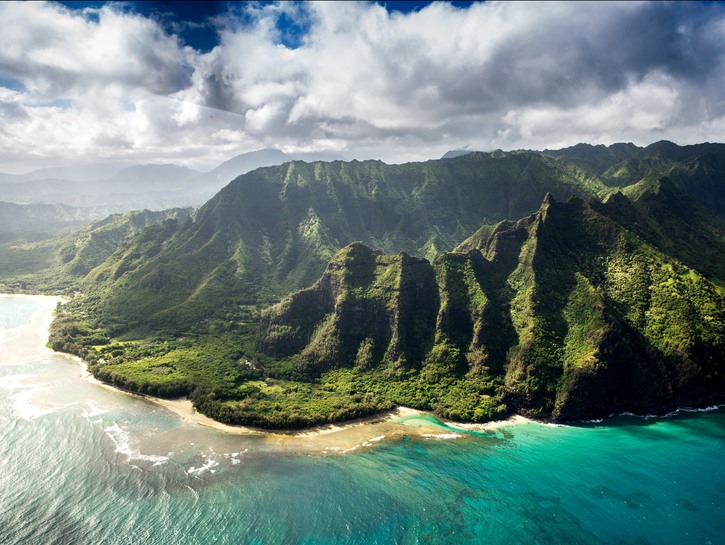
Hawaii is one of the most popular tourist destinations in America, attracting a record 9.3 million visitors in 2017. It’s not hard to see why: you can sidle up to an active volcano, learn to surf, even wear a bright floral shirt without anyone judging you. But Hawaii just passed a law that will make it a little harder to enjoy its naturally balmy climate.
Videos by TravelAwaits
In a watershed piece of legislation, the state has effectively banned 80% of sunscreen starting in 2021. Specifically, brands containing the chemicals oxybenzone and octinoxate will no longer be available in the islands without a prescription. (Those chemicals are also known as benzophenone-3 and octyl methoxycinnamate — say that ten times fast!)
You might wonder what would possess a summery paradise like Hawaii to ban sunblock, but the reason is pretty compelling.
From the great violence of Hawaii’s vulcanism, nature forges great beauty. The islands are flanked by coral reefs and atolls, rich and colorful underwater rainforests that are increasingly vulnerable due to human activity. The situation is dire: we’ve destroyed nearly half the world’s coral reefs in the last 30 years, and studies suggest there may be none left by 2050.
Coral reefs aren’t just pretty. They sustain 25% of all marine species, and support as many as 500 million people through tourism and fisheries.
You might expect climate change, shipping, and pollution to weaken the coral. (They do.) But one of the main culprits is actually sunscreen.

Not trying to make you the bad guy, but… Pixabay / chezbeate
Those alphabet-soup sunblock agents we mentioned — oxybenzone and octinoxate — are two of the worst culprits.
Oxybenzone is particularly lethal to young coral growths, which are a thousand times more sensitive to pollution than mature growths. Octinoxate is less deadly, but it’s the most widely-used anti-UVB chemical on Earth. Both are responsible for bleaching corals, killing them or stunting their growth.
That’s why Hawaii is trying to phase these chemicals out, and you can bet other jurisdictions with endangered corals will soon follow suit. Still, it may all be too little too late.
As we all know, sunscreen does a lousy job of staying on your body when you go in the water. In fact, about a quarter of it washes off in the first 20 minutes. Every year, humans end up dumping about 14,000 tons of sunscreen in the oceans. About 6,000 tons of that makes its way to the coral reefs, wreaking havoc. Hawaii’s reefs are particularly vulnerable because of the state’s historically high levels of tourism.
So, banning most brands of sunscreen may help the corals, but what about humans? What about the elevated risk of skin cancer?
Not to worry: there are environmentally friendly options available. Natural, mineral-based sunblocks are not nearly as damaging to the environment. We can also reduce the amount of sunscreen we use by throwing t-shirts and hats on when we go wading in the shallows. It can be as simple as that.
Hawaii’s new law should be a wake-up call for all of us who like to splash and play in the sun. We need to find ways of doing it that don’t endanger the coral reefs. They generate a portion of the oxygen we breathe, dazzle us with their beauty, and keep our planet healthy by supporting the marine ecosystem we take for granted.
One more time, here are the chemicals to avoid when you’re buying sunscreen: Oxybenzone and octinoxate (benzophenone-3 and octyl methoxycinnamate).
You can read more about eco-friendly sunscreens here.
